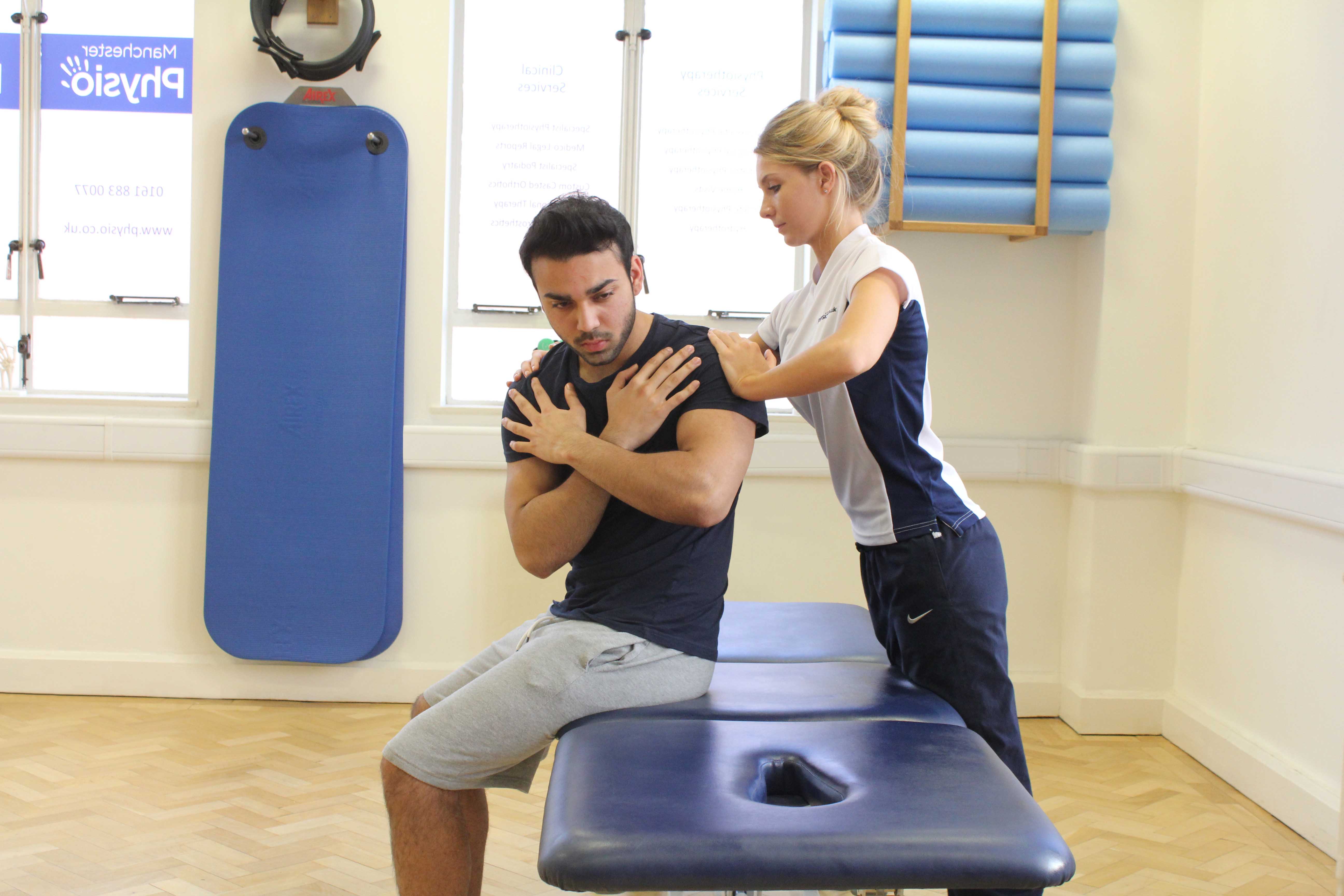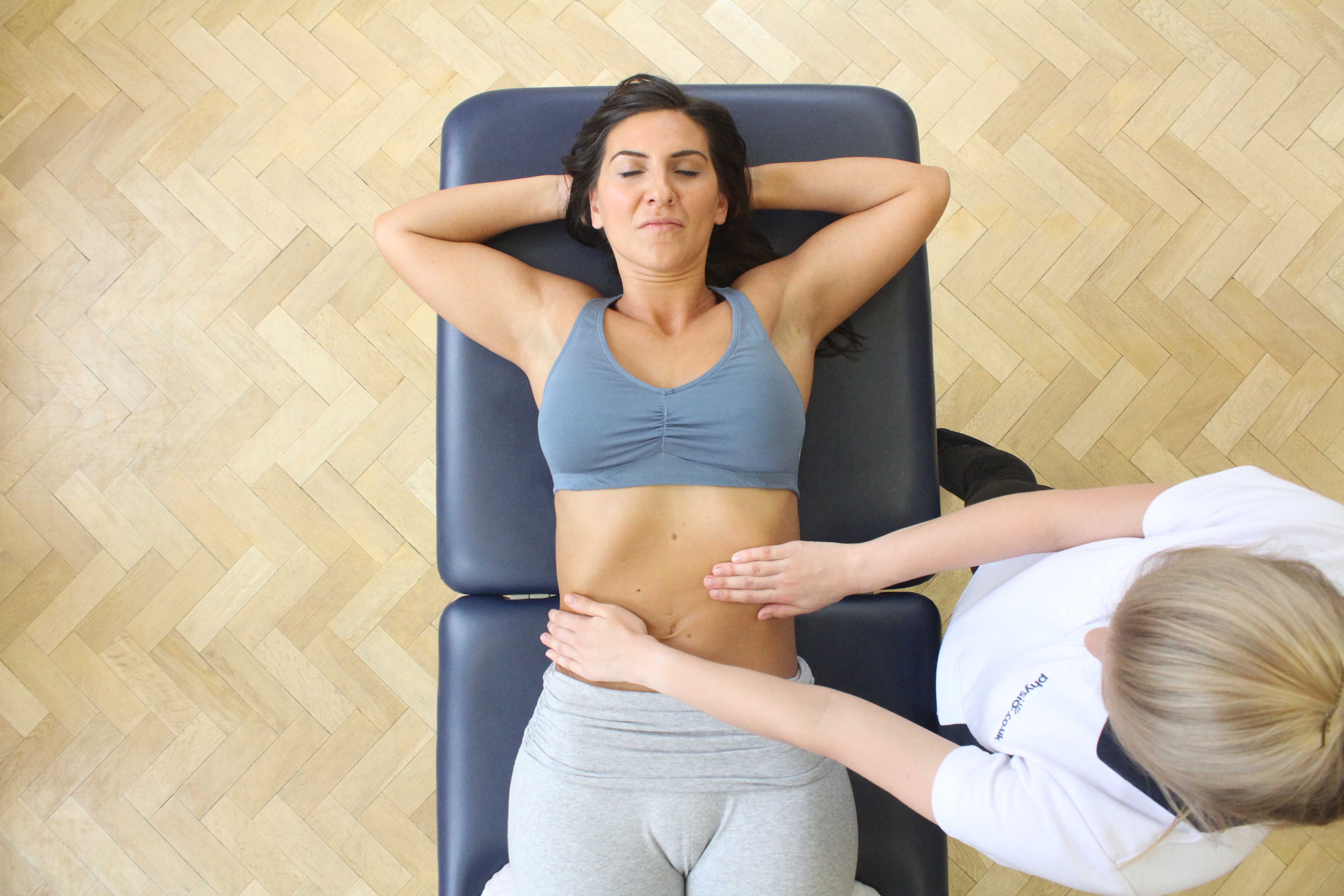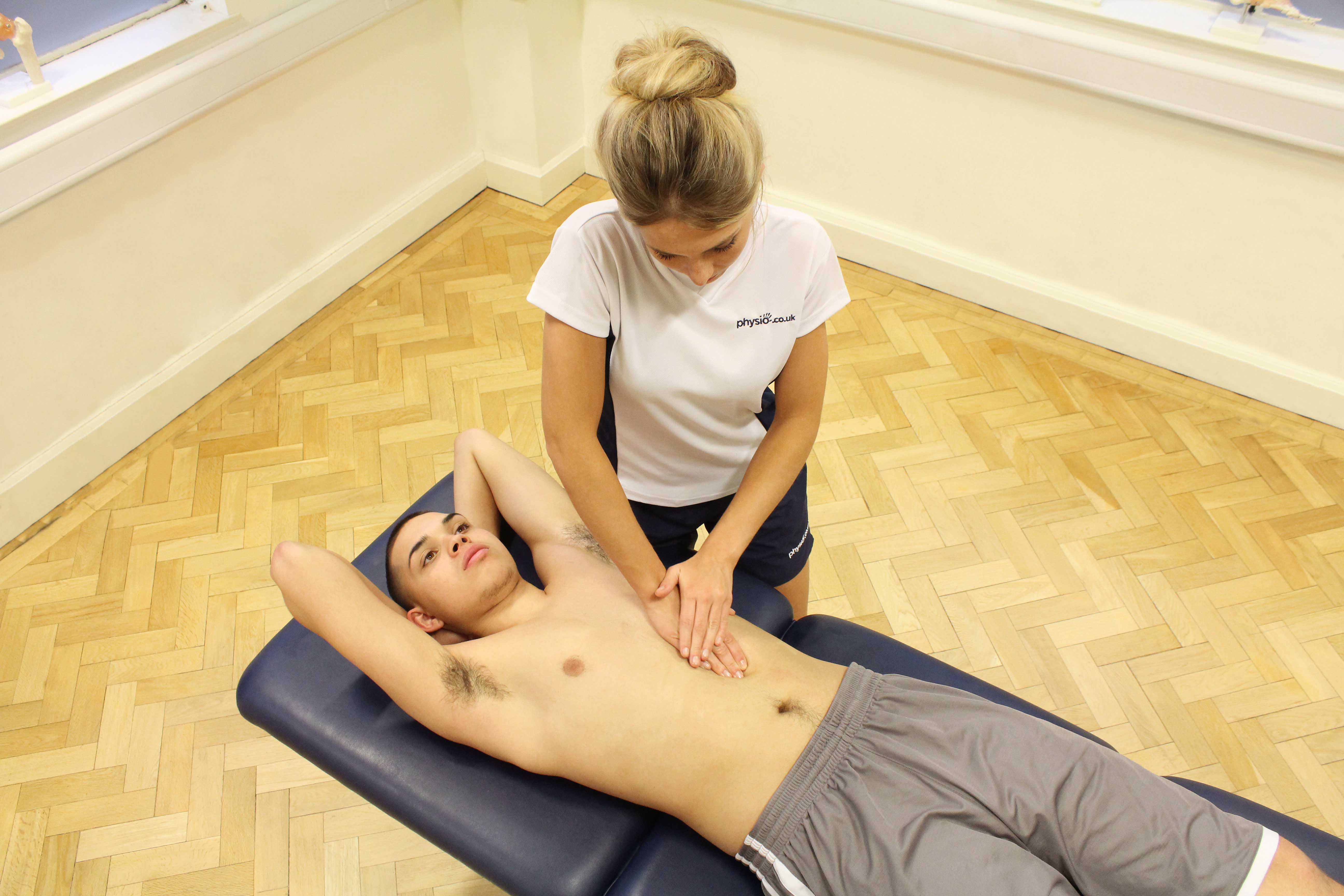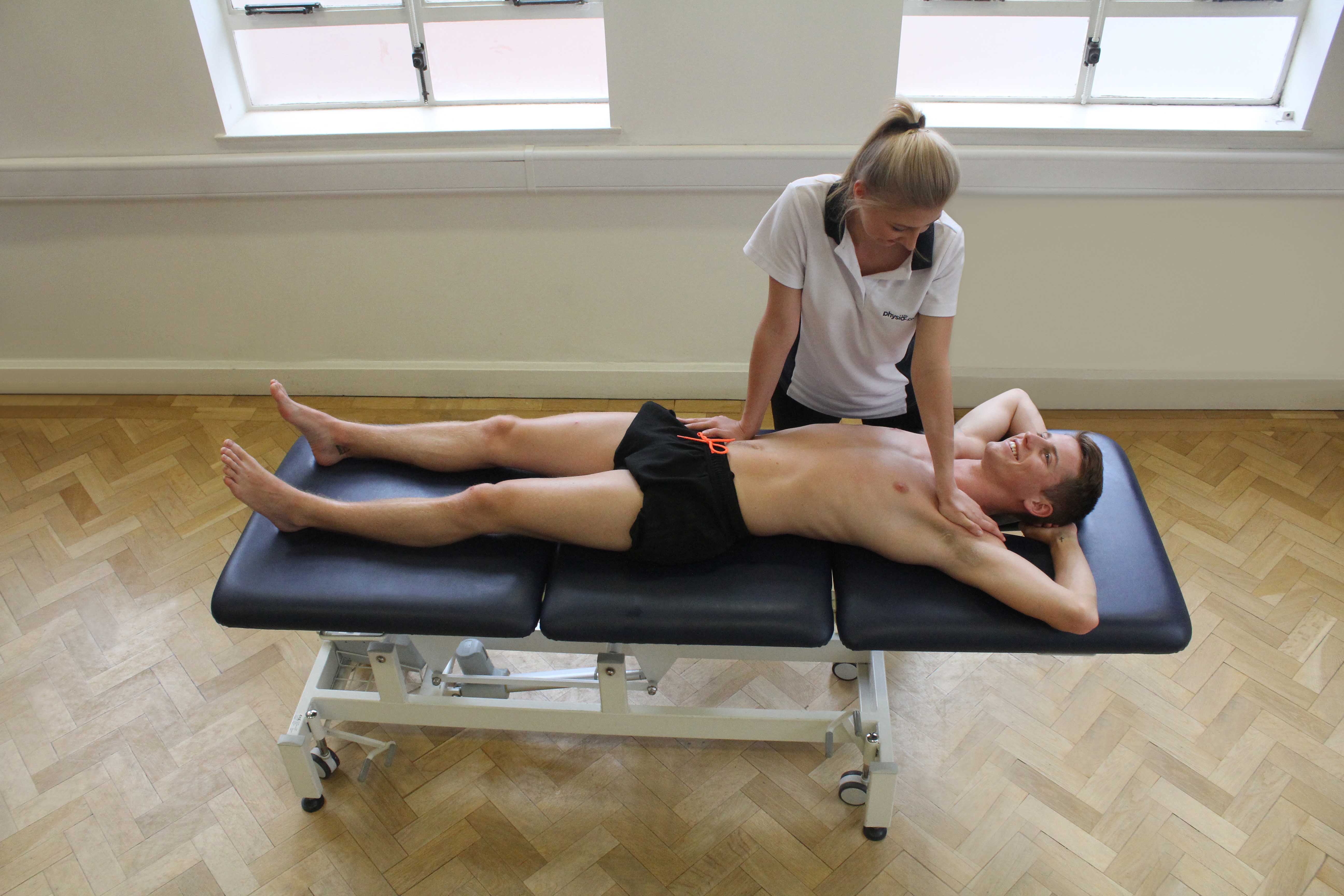What is diastasis recti?
A diastasis is a separation of an area in the body that is usually connected. This most commonly occurs in the rectus abdominus when the connective tissue between the two straps of muscle separates. This is known as diastasis recti. Physiotherapy is important if you have symptoms of diastasis recti.
 Above: Soft tissue massage of the abdominal muscles by an experienced therapist
Above: Soft tissue massage of the abdominal muscles by an experienced therapistHow does diastasis recti occur?
The most common cause of diastasis recti is following pregnancy. As a baby develops, it places additional strain on the abdominal muscles and causes them to weaken and stretch. Following childbirth, this can cause the rectus abdominus to stretch and separate and diastasis recti will develop.
 Above: Soft tissue massage of the abdominal muscles by an experienced therapist
Above: Soft tissue massage of the abdominal muscles by an experienced therapistWhat are the symptoms of diastasis recti?
Pain is the main symptom of diastasis and you may also be able to feel a gap in the rectus abdominal muscle if it is more severe. There may be local inflammation surrounding the diastasis and some bruising if there has been bleeding into the tissues. Other symptoms include:
What should I do if I have diastasis recti?
If you suspect you may have diastasis recti, it is important to have a physiotherapy assessment as soon as possible. Your physiotherapist will be able to create a tailored treatment programme depending on the findings of the assessment and your goals.
 Above: Soft tissue massage of the abdominal muscles by an experienced therapist
Above: Soft tissue massage of the abdominal muscles by an experienced therapistPhysiotherapy treatment for diastasis recti.
The physiotherapy provided for diastasis recti varies between individuals and will depend on your specific needs and goals. Potential physiotherapy treatment may include a tailored exercise programme including strengthening and stretching exercises, cyrotherapy (ice) and electrotherapy such as ultrasound. Additional treatments include:
What shouldn’t I do if I have diastasis recti?
Do not ignore your symptoms if you suspect you may have diastasis recti. You should not place extra strain on the rectus abdominus muscle and therefore you must avoid sit-up and twisting activities and heavy lifting.
 Above: Soft tissue massage of the abdominal muscles by an experienced therapist
Above: Soft tissue massage of the abdominal muscles by an experienced therapistCould there be any long-term effects from diastasis recti?
The recovery from diastasis recti will depend on the extent of the separation. However, an appropriate physiotherapy programme will ensure that optimal healing takes place and any long term complications are minimised.
To arrange a physiotherapy appointment call Physio.co.uk on 0330 088 7800 or book online.

 0330 088 7800
0330 088 7800


































